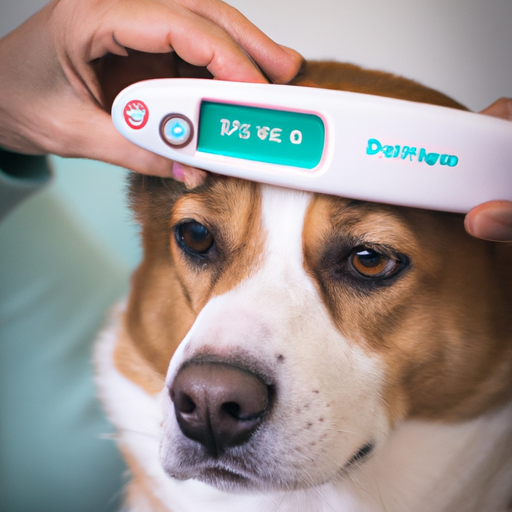As a caregiver, your dog’s health is of utmost importance to you. In this helpful guide, we will walk you through the steps to help you identify a fever in your furry friend and what actions to take if they are unwell.
H2: Knowing the Normal Body Temperature
Understanding what’s normal for your pet is the first step towards identifying any potential problems.
For dogs, the normal body temperature ranges between 101 and 102.5 degrees Fahrenheit (38.3 to 39.2 degrees Celsius). A temperature above this range could indicate a fever.
| Species | Normal Temperature Range |
|---|---|
| Dogs | 101 – 102.5°F |
H2: Recognizing the Symptoms
If your dog has a fever, they may exhibit some or all of the following symptoms:
- Lethargy
- Shivering
- Loss of appetite
- Coughing or nasal discharge
It’s important to note that these symptoms are not exclusive to fever and can indicate other health issues. Therefore, if your dog exhibits any of these symptoms, it’s best to consult with a veterinarian.
H2: Checking Your Dog’s Temperature
To check your dog’s temperature, you will need a digital thermometer. Here’s how to do it:
- Lubricate the thermometer with petroleum jelly.
- Gently insert the thermometer about one inch into your dog’s rectum.
- Wait for the thermometer to beep or until the temperature reading appears.
Remember to always handle your pet with care during this process to avoid causing them any unnecessary discomfort.
H2: When to Seek Veterinary Help
If your dog’s temperature is above the normal range, or if they are showing symptoms of being unwell, it’s time to consult with a professional.
- Sudden high fever (over 103°F)
- Persistent fever lasting more than 24 hours
- Severe symptoms such as vomiting, diarrhea, or seizures
Fever can be a sign of various health issues, including infections, inflammation, or other medical conditions. Your veterinarian will be able to diagnose the cause and recommend appropriate treatment.
H2: Preventing Fever in Dogs
Just like in humans, prevention is better than cure when it comes to your dog’s health. Here are some steps you can take:
- Keep your dog’s vaccinations up to date.
- Regularly check for ticks and fleas.
- Provide a balanced diet and regular exercise.
Frequently Asked Questions (FAQs)
Q: Can I use a human thermometer to check my dog’s temperature?
A: Yes, but a rectal reading is most accurate.
Q: How often should I check my dog’s temperature?
A: Unless your dog is showing symptoms of illness, regular checks are not usually necessary.
Q: How can I tell if my dog has a fever without a thermometer?
A: Look for symptoms such as lethargy, loss of appetite, and shivering. However, these can also indicate other health issues.
Q: Should I give my dog medication to lower their fever?
A: Never give your dog medication without consulting a vet. Some human medicines can be harmful to dogs.
Remember, as a caregiver, your pet’s well-being is in your hands. Stay observant, stay informed, and most importantly, stay loving.



